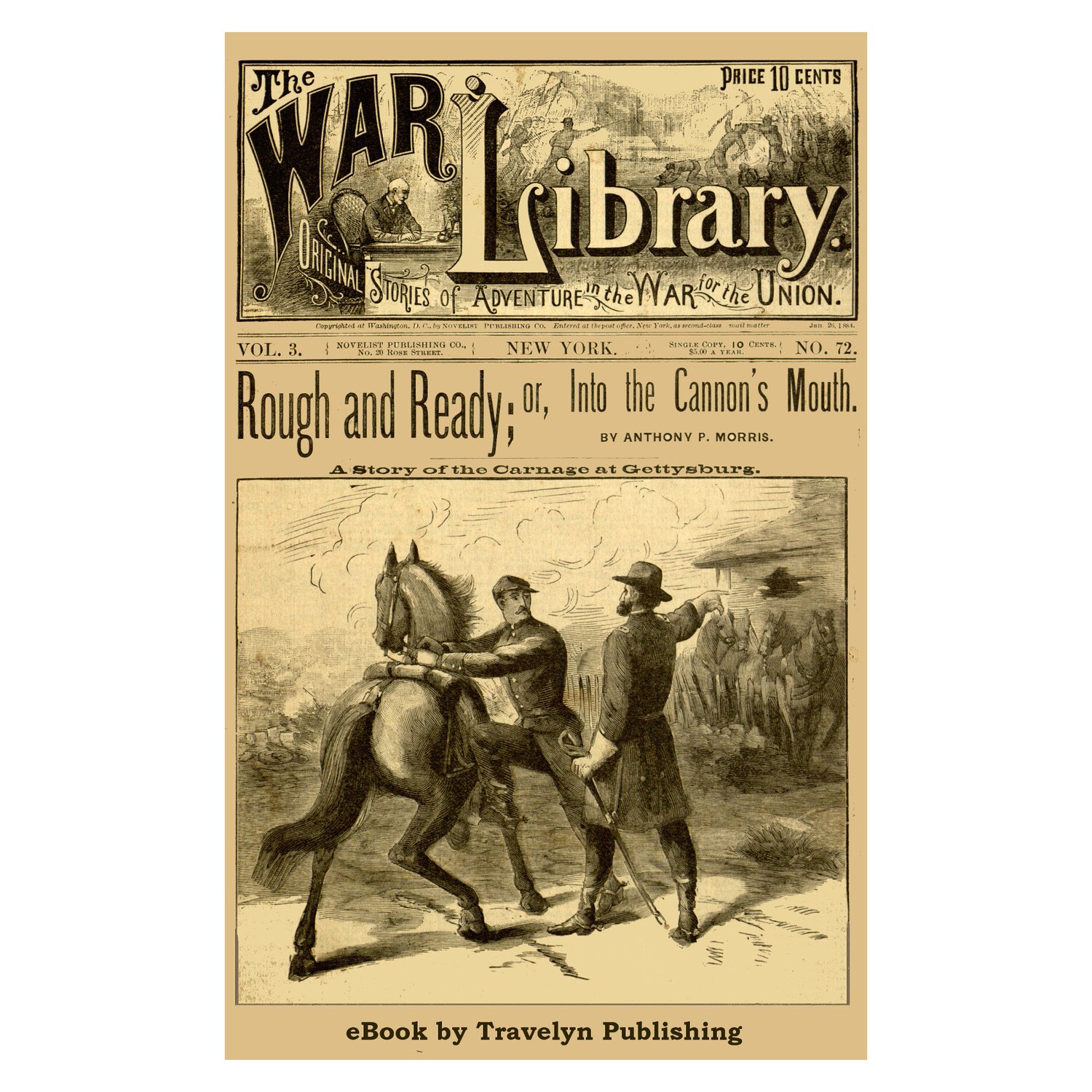
Rough and Ready; or, Into the Cannon’s Mouth
“The War Library,” originally published in the 1880s by Novelist Publishing Co. in New York, is a series of dime novels about the American Civil War—or, as the war was called at the time (at least by the sympathizers of the North), “the War for the Union.” Featuring characters, stories, and plotlines set in the midst of, or vicinity of, actual Civil War battles, and written by authors who seemed to possess first-hand knowledge of those battles, the War Library provides the reader with a unique chance to experience, from a personal perspective, the conditions, passions, and philosophical issues of one of the most fascinating periods in history. Civil War buffs, of which there are many, can do no better.
Rough and Ready, number 72 of the series and originally published January 26, 1884, takes place during and in the immediate vicinity of the Battle of Gettysburg, July 1–3, 1863, arguably the best-known battle of the Civil War; and the battle with the most casualties; and the battle considered to be the turning point of the war. President Abraham Lincoln would return to Gettysburg four and a half months later to dedicate the Soldiers’ National Cemetery, created for Union casualties of the battle, and to give a speech that came to be seen by historians as perhaps the greatest and most influential statement of American national purpose by a president ever.
Preparing old books (or, as in this case, weekly magazines) for digital publication is a labor of love at Travelyn Publishing. We hold our digital versions of public domain books up against any others with no fear of the comparison. Our conversion work is meticulous, utilizing a process designed to eliminate errors, maximize reader enjoyment, and recreate as much as possible the atmosphere of the original book even as we are adding the navigation and formatting necessary for a good digital book. While remaining faithful to a writer’s original words, and the spellings and usages of his era, we are not above correcting obvious mistakes. If the printer became distracted after placing an ‘a’ at the end of a line and then placed another ‘a’ at the beginning of the next line (they used to do this stuff by hand you know!), what sort of mindless robots would allow that careless error to be preserved for all eternity in the digital version, too? Not us. That’s why we have the audacity to claim that our re-publications are often better than the originals.
